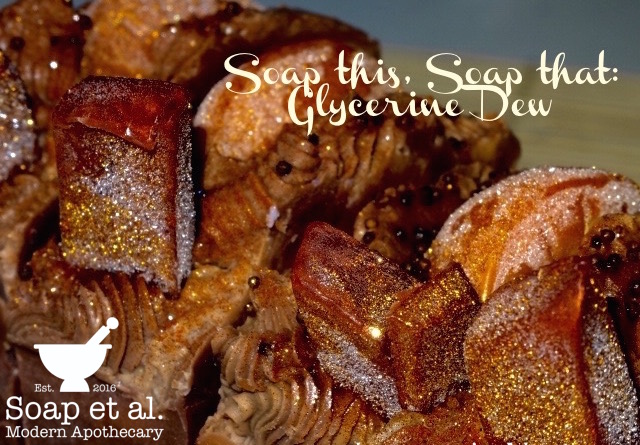Why is my soap sweating? August 17, 2022 – Posted in: soap making
Have you ever noticed you melt and pour or glycerine soaps look like they are sweating? This usually happens with glycerine soap that has been left unwrapped after being made and it appears as like droplets on the surface of your soap.

This picture shows a classic example of glycerine dew in these cold process soap bars with melt & pour soap toppers and embeds.
So what exactly is glycerine dew?
Glycerine dew (also called glycerine tears or glycerine sweat) is a phenomena seen in glycerine (or Melt and Pour) soaps. It appears as little drops on the surface of soap due to the high amounts of glycerine contained within.
Glycerine is a humectant and attracts moisture from the atmosphere to itself. You can understand how this will be very good for the skin. This can help keep the skin constantly hydrated and prevent dry, crackling skin especially during the harmattan season. From a soapmaker’s point of view, however, this could be a bother. Glycerine soap tends to sweat more in specific conditions and one of those is high humidity.
So, how do you get rid of or handle glycerine dews:
1. Invest in a dehumidifier (this will reduce the humidity in the room where your soap is stored).
2. Don’t put glycerine soap in the freezer. (You might be tempted to for easy unmoulding – DON’T!!)
3. Use Low Sweat Melt and Pour.
4. Wrap glycerine soap in heat shrink immediately after unmoulding. (This will help a lot!!)
5. Ignore it – it’s harmless. Wipe it off gently after cure when used as topper for CP soap.
I hope this helps.
Have you experienced glycerine dew before? How did you handle it? Leave a comment below to share your experience.
Happy soaping!
